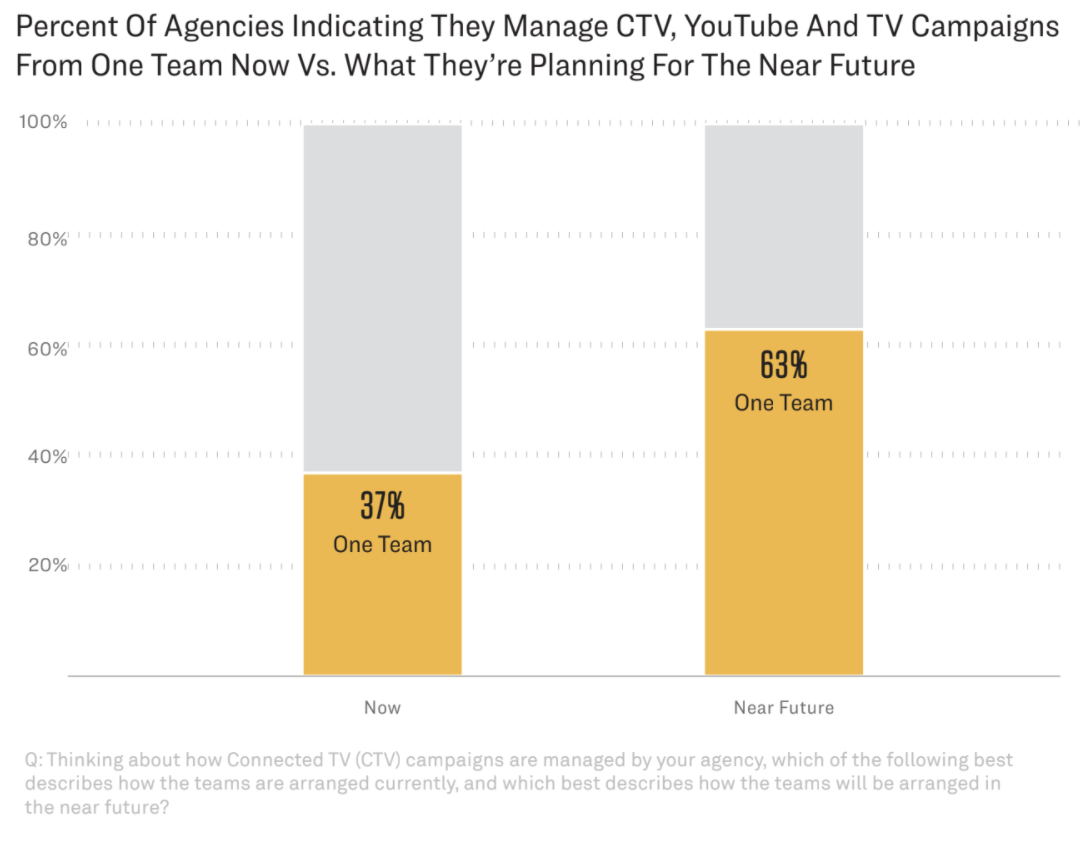
Media Agencies Plan To Break Down Silos And Merge YouTube, Linear TV, And Connected TV Buying Under One Team
February 16, 2024Big changes in video consumption over the past year are having a huge impact on how media agencies are setting up their planning and buying teams.
Traditionally, the team that buys YouTube is completely separate from the teams that buy linear TV. But it’s looking like that may start to change.
When we surveyed hundreds of media agency executives for our recent report on agency strategies, we found that currently only 37% of agencies plan and buy YouTube, Connected TV, and linear TV all from one team, instead dividing these channels across several teams. However, this will soon change as fully 63% of agencies anticipate they will merge these teams into a unified YouTube/CTV/Linear TV video team in the near future.
Why do agencies plan on consolidating their teams? The way people watch video is changing, and that shift accelerated during 2020’s lockdowns. More and more people are cutting their cable subscription — and Connected TV (including YouTube on TV Screens) saw a major increase in watchtime and viewers. eMarketer’s data shows that time spent with Connected TV increased by 33% in 2020, and Nielsen data shows that YouTube is the largest ad-supported platform within Connected TV. Our survey data also showed that agencies expect YouTube to win the majority of dollars as TV budgets go digital, and also anticipate a big increase in Connected TV spending this year.
By bringing linear TV, Connected TV, and YouTube under one team, agencies can stay agile, uncover audiences, and drive efficiencies for their clients as audiences shift to digital channels.
Mike Fisher, VP Advanced Video & Audience, Essence, made this point in a recent interview with Beet.tv. He highlighted that if agencies are only buying linear TV, they’re missing 30% of their target audience — instead, they educate their clients on taking an audience-first approach, agnostic of the distribution channel. Their agency lets the data tell the story around what they can do to best reach their client’s audiences.
Want more insights around how agencies are adapting to changing viewing behaviors? Download the e-book of our YouTube & Connected TV Media Agency Survey, and connect with us for deeper insights on the differences between Big 6 and independent agency strategies.
